Richard McMaster, keyboard player in the Glasgow band Golden Teacher, is trying to explain why the city’s underground tends to shun media attention. “Scenes get hyped-up and go wrong but, because there’s no media here the way there is in London, things happen slowly and organically. There’s a community in Glasgow doing things for the right reasons: because they love music.” He is instinctively wary: “In many ways, even this discussion makes me feel uncomfortable.”
Glasgow may produce a stream of credible crossover stars (Franz Ferdinand, Chvrches or the DJ/producers Jackmaster, Rustie and Hudson Mohawke), but that seems to happen more by accident than design. Invariably, such break-out stars will have already spent years toiling away in bands and club collectives, in a city where – due to the influence of the Glasgow School of Art – everyone seems to be far more concerned with creating sincere work and having fun, than making money. “Music, the visual arts and that DIY approach go hand-in-hand in Glasgow and you can trace that back to punk,” says artist Patrick Jameson, co-founder of the Queens Park Railway Club art space.

All that creative activity teems around an infrastructure of studios, labels, gig promoters and galleries (Green Door, Transmission, Pipe Factory, Night School, Domestic Exile, GLARC, Roof Garden, All Caps, Outer Zone), which, while often international in scope, nurture Glasgow talent. “If you’ve an idea, it’s easy to participate. There’s not much money in Glasgow but there is support,” says Richard Chater, co-founder of the label and club collective, Numbers.
Chater also works at the record shop and vinyl distributor Rubadub, a vital resource for the city’s labels. These kind of connections are key, says artist Claire Biddles: “The crux of Glasgow DIY is that everyone does everything. You’ll go to Mono for a fundraiser for Open House and there’ll be bands on who are also artists, writers or bartenders in town. Everything feels joined up.”
That underground prides itself on its progressive politics, too. There is room for improvement (the feminist music collective OH-141 is pushing for that), but it is striking how many women – So Low’s Rebecca Marshall, Fem Bitch Nation, Susannah Stark, LAPS – are prominent on the local experimental electronic music scene.
Glasgow is not without problems. As in most cities, gentrification threatens its creative communities. It is forcing up rents and forcing artists out, hence the migration of creatives to the Southside (south of the river Clyde). Meanwhile, a 3am club curfew means that hard-partying Glasgow has to play cat-and-mouse with the fun police. Such licencing restrictions have spawned a sub-culture of ad hoc gigs in grey area spaces, illegal after-hours events and raucous late-night house parties. “Going back to people’s houses and bonding over music is a big part of Glasgow’s club culture and how electronic music has developed here,” says Chater.
Yet, laments Keith McIvor – aka JD Twitch, half of the city’s legendary Optimo DJ duo, club and label – a lot of that “brilliant” talent goes unnoticed: “There is something in the Glasgow mentality. People aren’t good at promoting themselves, but it’d be nice if they were a tiny bit more ambitious. There’s nothing wrong with doing something amazing that reaches a lot of people. It’s not selling out.”
He may have a point. But for the time being, if you want to experience the best of Glasgow, you will have to visit it and explore.
MUSIC
Sub Club

Like Frankfurt’s Robert Johnson or Hamburg’s Golden Pudel, the Sub Club (capacity 410) is one of those smaller distinctive European clubs that are sites of pilgrimage for electronic music lovers. Partly, that is due to the high quality of its residents and established nights (Harri & Domenic’s veteran Subculture, Sensu, Numbers, Optimo), partly it is down to the clarity of its renowned soundsystem. But other factors – its low-ceiling, friendly regulars and that 3am finish (“You’ve got three hours to make it matter,” says Numbers’ Richard Chater) – mean that, as it celebrates its 30th birthday, the Subbie is still revered for the intensity of its parties.
22 Jamaica Street, subclub.co.uk
La Cheetah
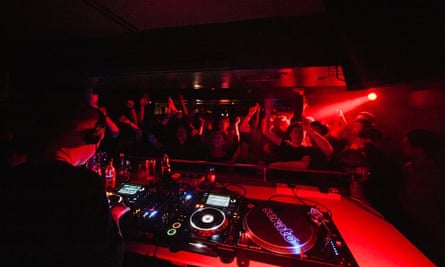
This 200-capacity basement below Max’s Bar reminds Chater of London’s fabled Plastic People. “The sound is impeccable, the lighting’s simple and it’s got that real close, intimate vibe. Promoters are putting lots of new electronic producers in there but you’ll also see people like Theo Parrish, Joy Orbison and Objekt at La Cheetah,” he says.
73 Queen Street, lacheetahclub.co.uk
The Art School

It is not so cheap anymore (regulars can get misty-eyed about the old £1-a-pint days) and, for Golden Teacher’s Richard McMaster, after its 2014 redesign, the Art School has only recently begun to feel “lived-in”. But this forward-thinking student association building (open to the public) remains not just a great late-bar and club/gig venue, but fundamental to the lively cross-pollination between Glasgow’s music and art scenes. McMaster says: “The programming is some of the best going. They’re open to experimenting and it’s rare I don’t end up here once every couple of weeks.”
20 Scott Street, theartschool.co.uk
The Poetry Club

Originally created on-the-fly by Turner-nominated artist Jim Lambie, this diminutive venue within the vast SWG3 complex facilitates everything from experimental theatre to Iron Barz’ battle-rap sessions. Its roster of club nights (“homo disco party” Hot Mess; Shoot Your Shot) is excellent. “It’s a weird place,” enthuses McMaster. “You can have 40 people in and it feels busy. The industrial and EBM night, So Low, is amazing.”
100 Eastvale Place, thepoetryclub.net
Ad hoc Glasgow
Keep your ear to the ground because, in Glasgow, events are often organised in “outsider venues”, says McMaster. From community centres to cricket clubs (see Transmission’s Poloc Cricket Club summer party, 22 July), promoters are constantly searching for novel environments. For instance, this year, experimental festival Counterflows put Berlin producer Rashad Becker on at Queens Park Bowling Club.
ART
Celine

Due to a lack of affordable space, emerging Glasgow artists often exhibit in disused spaces or their own homes, an idea now formalised in the Open House festival. Patrick Jameson, who with Ellis Luxemburg runs the Queens Park Railway Club, an exhibition space in a suburban railway station, says the Celine gallery has taken that approach to its logical conclusion: “Unfunded, off their own backs, they’ve turned their living room – they still live there – into a contemporary art space, pulling in people from around the world. The last show was a Swiss artist who drew all over the walls of this old Victorian flat. There’s a nice energy there and you’re aware you’re in someone’s house. It’s like a house party.”
493 Victoria Road, galleryceline.com
Mount Florida Screenings

Mount Florida Studios near Hampden Park stadium hosts workshops and small exhibitions, but, says Jameson (whose Queens Park Railway Club is about to launch its “micro-residencies” series, Ten Days Of Summer), it is, perhaps, most notable for its video screenings, currently taking place monthly at the city centre Gallery of Modern Art (Royal Exchange Square): “There are lots of people in Glasgow working in different disciplines, but there isn’t a heap of focus on artists’ films which this addresses.”
Next date: Thurs 13 July, on Facebook
Good Press
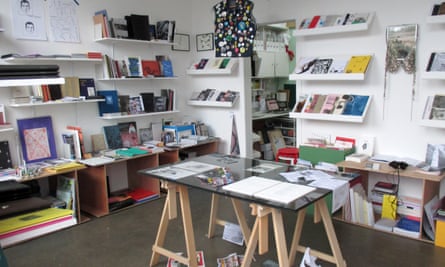
This year, a two-day festival in April at the Centre for Contemporary Arts, Glasgow Zine Fest (next in April 2018), illustrated the vibrancy of Glasgow’s self-publishing scene. “Zine Fest is a key event in the DIY calendar,” says Claire Biddles, who recently released a new issue of her “pop crushes” zine, Fuck What You Love. To sample Glasgow’s self-published output, head to indie publishing hub Good Press: “It’s a great shop which sells zines and puts on small exhibitions and larger events at other venues.”
5 St Margaret’s Place, goodpressgallery.co.uk
Buzzcut

This radical art and theatre collective each spring stages an international festival of performance at the Pearce Institute (in Govan – for Jameson, “an often forgotten working class neighbourhood”), and works hard to engage the local community. For instance, Govan residents were given free entrance to last year’s Buzzcut CCA shows. It is involved in numerous other off-beat projects, including plans to place performance artists in late-night club settings and a workshop on audaciousness that will create a one-off live art event in central Glasgow.
glasgowbuzzcut.wordpress.com
Transmission Gallery
An artist-run, multi-disciplinary space, Transmission has been at the forefront of challenging creativity in Glasgow since 1983; Jameson says: “Everybody has had a show at Transmission or some involvement with it.” Recently, the Other’d Artist/s explored the experience of black artists in Scotland. For Biddles, the show “mixed an exhibition of work with events and a small zine library, which is typical of the fluidity that thrives in Glasgow”. As famously referenced in Franz Ferdinand’s Do You Want To, there is usually a Transmission party to accompany its exhibitions too, incorporating performance, music and DJs. The Pipe Factory is another key artists’ community where lots of interesting things happen.
28 King Street, transmissiongallery.org
FOOD
Saramago

Within the Centre for Contemporary Arts (and named after Portuguese communist writer José Saramago), this attractive atrium cafe not only serves veggie small plates, but is a cultural node. After a feast of roast garlic hummus with homemade flatbread, griddled leeks and romesco sauce or smoked tofu tempura, head to Saramago’s terrace bar where you might find Mogwai or Fem Bitch Nation’s Letitia Pleiades DJing until late. Saramago also hosts gigs at the CCA, such as its forthcoming show with one of 2017’s rising stars Kara-Lis Coverdale (1 Aug).
Small plates from £3.25, mains from £9.25, 350 Sauchiehall Street, cca-glasgow.com
Paesano
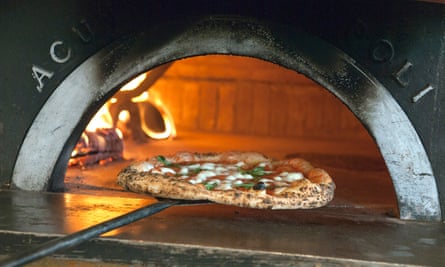
Paesano’s two branches serve Neapolitan-style pizza with toppings such as Campania mozzarella and tomatoes, and are then cooked in wood-fired clay ovens to produce a light, chewy and charred crust. “The pizzas are great and you’ll never spend more than £15 or £20,” says Helen Vass, an award-winning pastry chef who runs the dessert pop-up, Dulce (next dates August, @dulcehelenvass).
Pizza from £5, 94 Miller Street/471 Great Western Road, paesanopizza.co.uk
Big Feed
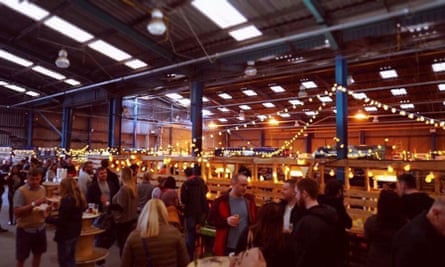
Glasgow’s first regular street food party is a collaboration between Street Food Putter Club (burgers and barbecue meats), Firedog hotdogs and small-batch roasters Charlie Mills Coffee. Held in a Govan warehouse with live acoustic music, DJs and several bars, it usually showcases 12 traders. Look out for Chompsky (yes, a food truck inspired by the US philosopher) and seafood stars Shrimpwreck. “It’s a bit rough and ready,” says Vass, “but Glasgow’s looking for something different, the food scene’s vibrant on that casual side.”
Second/last weekend monthly, £2 entry, under-10s free. Dishes £4-£8. 249 Govan Road, on Facebook
Rumours Kopitiam
When not cooking at her own brilliant Babu Street Kitchen, Rachna Dheer loves this neat, simple Malaysian restaurant: “They don’t shout about it. They keep their heads down, do the food and it’s awesome. The salt‘n’chilli crab and the Malaysian-style beef curry with aubergines and tofu is out of this world.”
Main with rice around £11. 21 Bath Street, 0141 353 0678, no website
The Glad Cafe

A non-profit social enterprise, this Southside arts hub is a cafe by day and, after dark, a bar and venue for music, poetry, debate and film nights. It is also home to a community choir and publishes art and literature zine the Glad Rag. “It does a lot of experimental and intimate gigs,” says Richard McMaster. Now run by the terrific McCune Smith (whose HQ you will find on Duke Street in town), the kitchen is big on locally sourced breakfasts and poached eggs-on-toast brunches, such as the “classic” with black pudding, caramelised onions and hollandaise. Soups and sandwiches served at lunch.
Brunch £7-£8.50, 1006a Pollokshaws Road, thegladcafe.co.uk
DRINK
Hippo Tap Room
Just a single door on Sauchiehall Street, the entrance to the Hippo Tap Room gives little indication of the hop-loaded, beery wonders that lurk below. “That is what’s kind of cool about it,” says Jehad Hatu, who runs the West End’s Grunting Growler, a bottle shop and growler (beer jug) filling-station with a small amount of seating for drinking-in (schooners from £3.50). “The Hippo has 10 taps, three cask lines and a rotational fridge, and plenty of beer-geeks drink there,” says Hatu. “It’s got a fun vibe.”
Pint from £3.20, 323 Sauchiehall Street, hippotaproom.co.uk
Vino Valentino
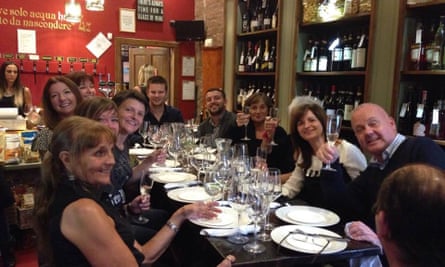
Off Byres Road in the West End, this tiny wine bar and deli is one of Helen Vass’s favourite spots: “It probably only fits 12 people, mostly around a high-table in the middle of the room, but it’s brilliant. It sells a lot of Italian wines on tap and, although it’s been open for ages, not many people know about it. It’s like being in Italy.”
Glass from £2.50, 6 Chancellor Street, vinovalentino.co.uk
The Rum Shack
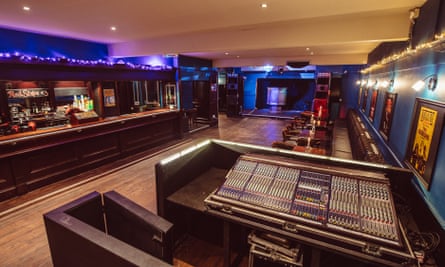
Yes, this Southside bar stocks a vast selection of rums (including Mogwai Rockact81r, created by the Glaswegian post-rockers), and it serves generous, tasty platefuls of jerk chicken and curried goat. But, notably, the Shack’s adjoining Dancehall venue also hosts all manner of left-field entertainment, such as X-rated storytelling shindig Smut Slam; ambient and Balearic night Sumo Jungle; or tropical-disco adventure Loosen Up. “The rum’s cheap, it’s got a huge soundsystem and really good parties happen there,” says McMaster.
657-659 Pollokshaws Road, rumshackglasgow.com
The 78
The Finnieston outpost of a veritable empire of pivotal vegan cafe, club and gig venues, the laid-back 78 majors on craft and organic beers (William Bros, Sam Smiths, Black Isle); falafel wraps, curries and meze platters; and DJ-nights including a veteran dub session and the International Community’s global explorations. In the city centre, this family of venues include cafe-bar and venue Mono, which houses record shop Monorail, and the bar-venue-art-hubs, Stereo and the Old Hairdressers. “Stereo’s great. I’ve played countless gigs there; everybody in the city who does music has,” says McMaster. “The Hairdressers is across the alley and it’s interesting for smaller touring gigs and, during the Glasgow International festival (April 2018), plays and cinema screenings.”
Pint from £3.70, 10-14 Kelvinhaugh Street, the78cafebar.com
The Allison Arms
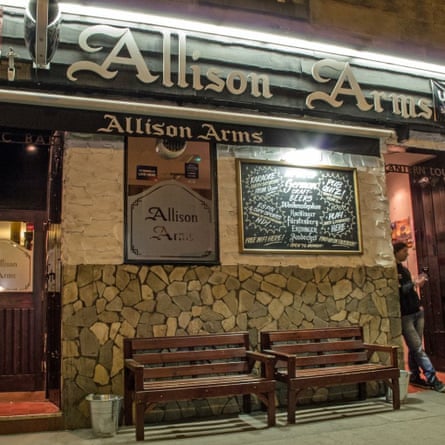

Comments (…)
Sign in or create your Guardian account to join the discussion